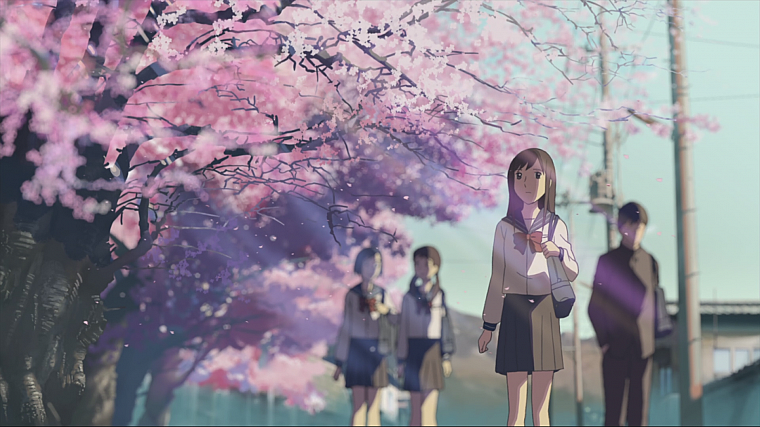I've been influenced by numerous artists in my day. The painting of the dutch masters come to mind. With their heightened vivid perfection of nature and the characters within them. Ken and Robert Williams who made the old Sierra Online computer adventure games have been another influence. The photography of Dan Abrams and Andrew Mohrer were others. On the filmmaking front, the work of James Cameron and David Fincher, two directors whos project's I've worked on and met personally have also been tentpoles. However, by far the most influential of them all, has been Makoto Shinkai.
He is a Japanese anime director and former graphic designer. His body of feature work includes, The Place Promised in Our Early Days / 雲のむこう、約束の場所 (2004), 5 Centimeters Per Second / 秒速5センチメートル, Children Who Chase Lost Voices / 星を追う子ども (2011), The Garden of Words / 言の葉の庭 (2013), and Your Name/ 君の名は (2016). Most of the narratives of his films are coming of age stories of teenage love, surrounded in a Terrence Malick-like whisper voice wrapper. Blending science fiction with the drama and angst of adolescence. Also importantly, he became a filmmaker by doing the wrought I most respect. He did it himself. I've done this and no one knows who I am except my friends, acquaintances, and my mom. Gareth Edwards also did this with the film 2010 Monsters and now he's directed a Star Wars movie. Shinkai's 2001 breakout project Voices of a Distant Star looked incredibly good for a one-man project. Voices was a breakout success for an amateur animator, and Shinkai has created three more films in the past decade, establishing himself as one of the anime industry's preeminent creators.
His narrative choices are okay, but what really sets him apart is his distinct visual style. Shinkai belongs to a new generation of animators who have never worked in the traditional pen-and-paper format, and his film Voices of a Distant Star is a testament to how dramatically computers have changed the animation industry in the past decade. His Art Direction is second to none, creating a dreamy hyper-saturated pallet of beautiful texture and optics. Glows and blooms are common, but always motivated. All inside a stylized feature of watercolor clouds, vividly colored skies and dramatic lighting. I've made it a practice to put on his films with the sound off as background for my computer when in downtime. Much like a moving wallpaper. As I've developed my own visual asthetic, I've been finding I always prefer the saturation cranked up more and more as well.
One of the most key influences of his work is to show that texture is absoulty paramount. By texture, I mean detail in all areas of the frame. Hence it's really awful to point a camera at someone with a flat white wall behind them or solid color psych backdrop. Clouds and sunsets are perfect opportunities to build up the texture. A habit I've been influenced by in my visual work and various life experiences such as taking both LSD and DMT under beautiful vanilla skies. So skies have become very important in my personal world as well as my artwork. Shinkai does skies masterfully using them as a canvas for beautiful heightened, almost dreamy, ethereal textures. This is a habit I've syncronisticlly found myself creating as well in my work of the past unconsciously and now consciously in my work of more recent times. See my Auroras, Shamans of the Global Village, and Transmutation posters for reference. I promise not all future posters will be of a sky!
This aesthetic leads to a mixture of real life non-fiction combined with a slight science fiction Mise-en-scène. There are elements in both the pilot episode of Shamans of the Global Village Episode 01 and Transmutation which I feel accomplish this well. Always in support of the narrative and not as a distraction from it. Shinkai had been quoted as saying, "I think that science fiction can, by creating extreme situations and settings, draw out the essence of human relationships," Shinkai wrote. "The ability of science fiction to create thought experiments...is one of the things I like about it." It's ultimately about telling a story with interesting characters that are compelling and hold the viewer's impact. That's paramount. When you have that foundation and put it in a container that's visually stunning, then you've struck gold in my book.







